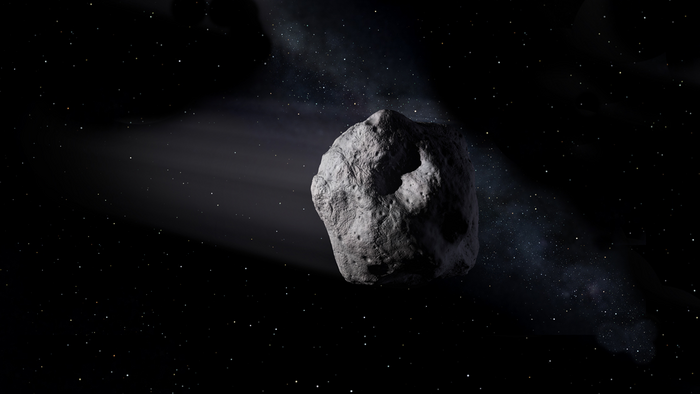What is a mini-moon? The Earth’s new satellite – explained
Our neighbourhood’s new visitor is one of just a few seen in the past

Your support helps us to tell the story
From reproductive rights to climate change to Big Tech, The Independent is on the ground when the story is developing. Whether it's investigating the financials of Elon Musk's pro-Trump PAC or producing our latest documentary, 'The A Word', which shines a light on the American women fighting for reproductive rights, we know how important it is to parse out the facts from the messaging.
At such a critical moment in US history, we need reporters on the ground. Your donation allows us to keep sending journalists to speak to both sides of the story.
The Independent is trusted by Americans across the entire political spectrum. And unlike many other quality news outlets, we choose not to lock Americans out of our reporting and analysis with paywalls. We believe quality journalism should be available to everyone, paid for by those who can afford it.
Your support makes all the difference.The Earth has got itself a new moon.
The new satellite is temporary: it will leave again at the end of November. And it is very small, at just 10 metres across.
But it is one of a very few times that we have seen the Earth acquire a new temporary satellite of this kind. Doing so is both a testament to how advanced our astronomy capabilities are – and how busy space is.
What is the new mini-moon?
Officially known as 2024 PT5, it is actually an asteroid. It is thought to come from the Arjuna asteroid group, a set of asteroids that are just under 100 million miles from the Sun and have similar orbits.
As its name suggests, 2024 PT5 was only spotted this year. It is small and dark, both of which make it difficult to see, especially when it is distant from Earth.
It poses no threat to the planet. Its orbit will take it in a horseshoe shape, around the Earth and then back out into the depths of outer space.
What is a mini-moon?
The word is used for asteroids or comets that become bound to our gravity and so become a satellite, just like the real Moon that we see every night is. They are “mini” because they are small but also because they are not like the more celebrated moons that surround us and other planets in our solar system, since they usually leave quickly after arriving.
Not all temporary satellites are necessarily naturally occurring. Space junk - such as probes or lost rockets – can also be captured by the gravity of a planet and join it as a satellite.
Some might object to the terminology. They are certainly very mini – the newly acquired one is just 10 meters in diameter, compared to about 3,500km for the real moon – and they don’t stick around in the same way.
But scientists have taken to using the term, and it is certainly catchier than other ways of describing it, such as the more scientifically traditional “temporary satellite”.
Are mini-moons common?
We have had them before. One – known as 2022 NX1 – joined our orbit a couple of years ago, and astronomers calculated that it had been captured before in 1981, and will come back again in 2051.
In 2002 there was a minor controversy when researchers thought they had found a mini-moon – but further research suggested that it was in fact part of a Saturn V rocket from the Apollo program. Since then scientists have been cautious because it can be difficult to separate real and natural moons from the large number of other pieces of material that are floating around Earth.
The first was spotted in 1991 and scientists have catalogued five of them in total. But since they tend to be small and hard to spot, we have likely had many more before that we didn’t know about – and could do in the future.
Join our commenting forum
Join thought-provoking conversations, follow other Independent readers and see their replies
Comments